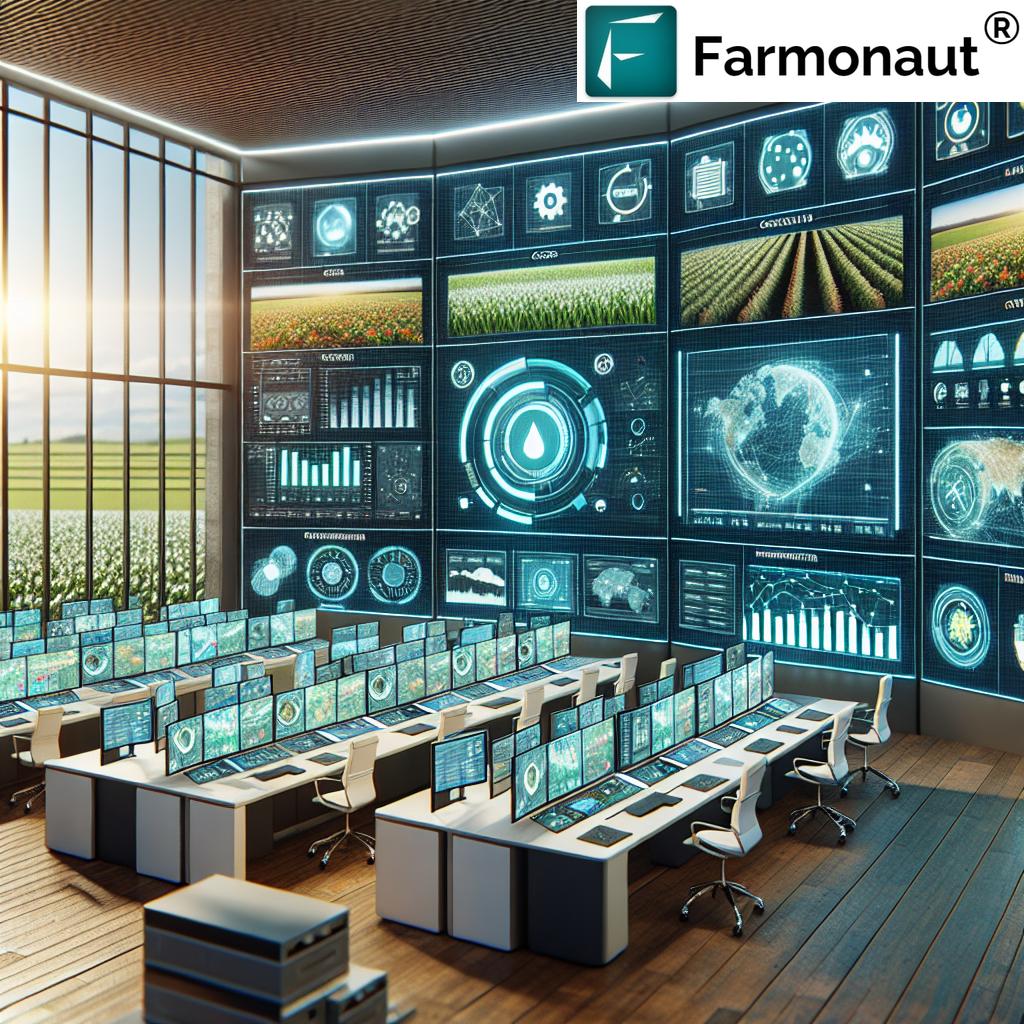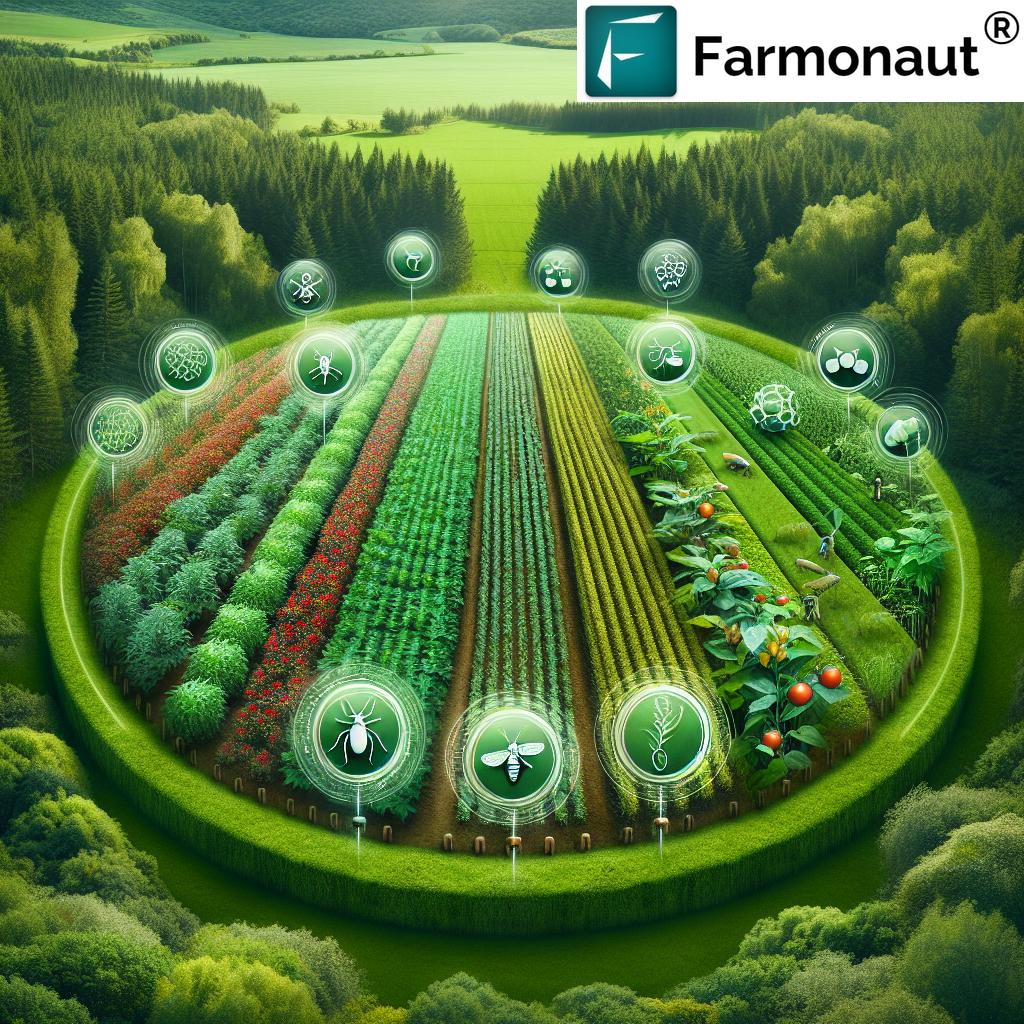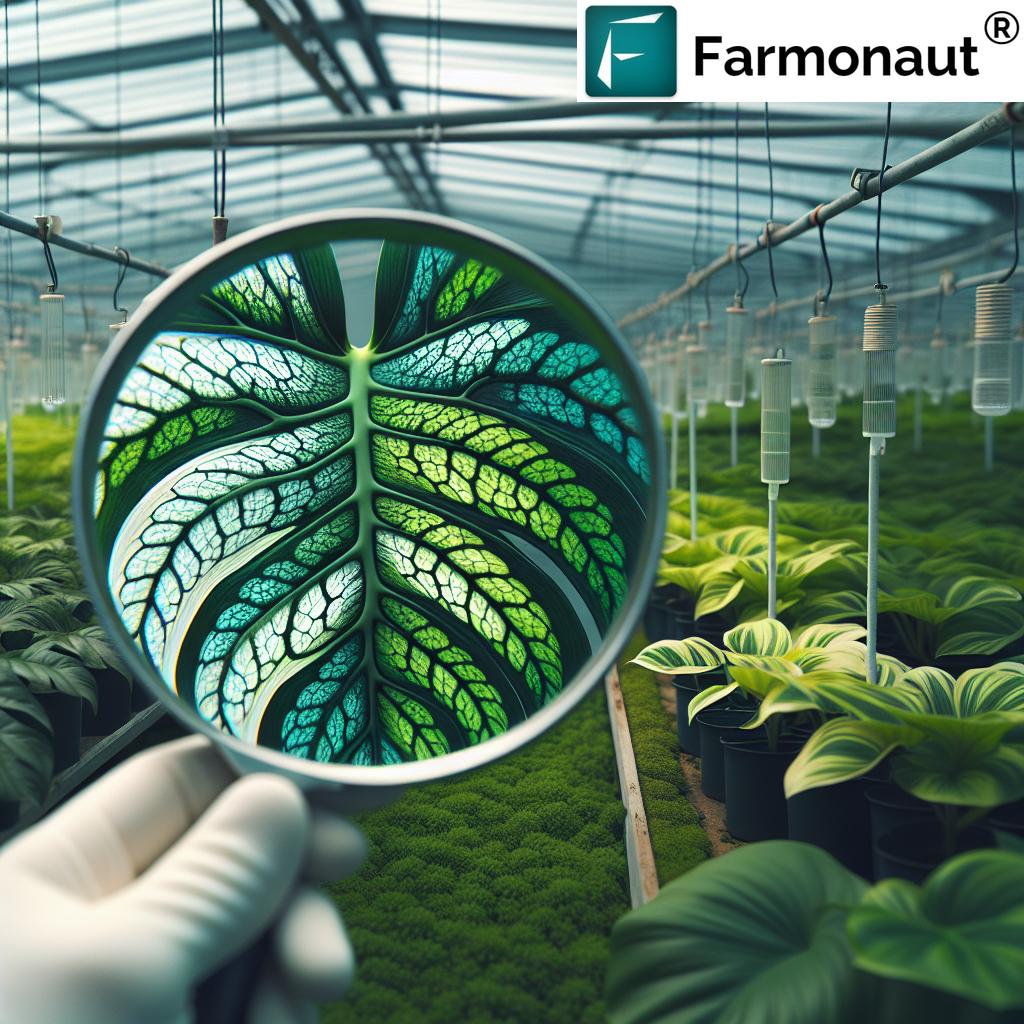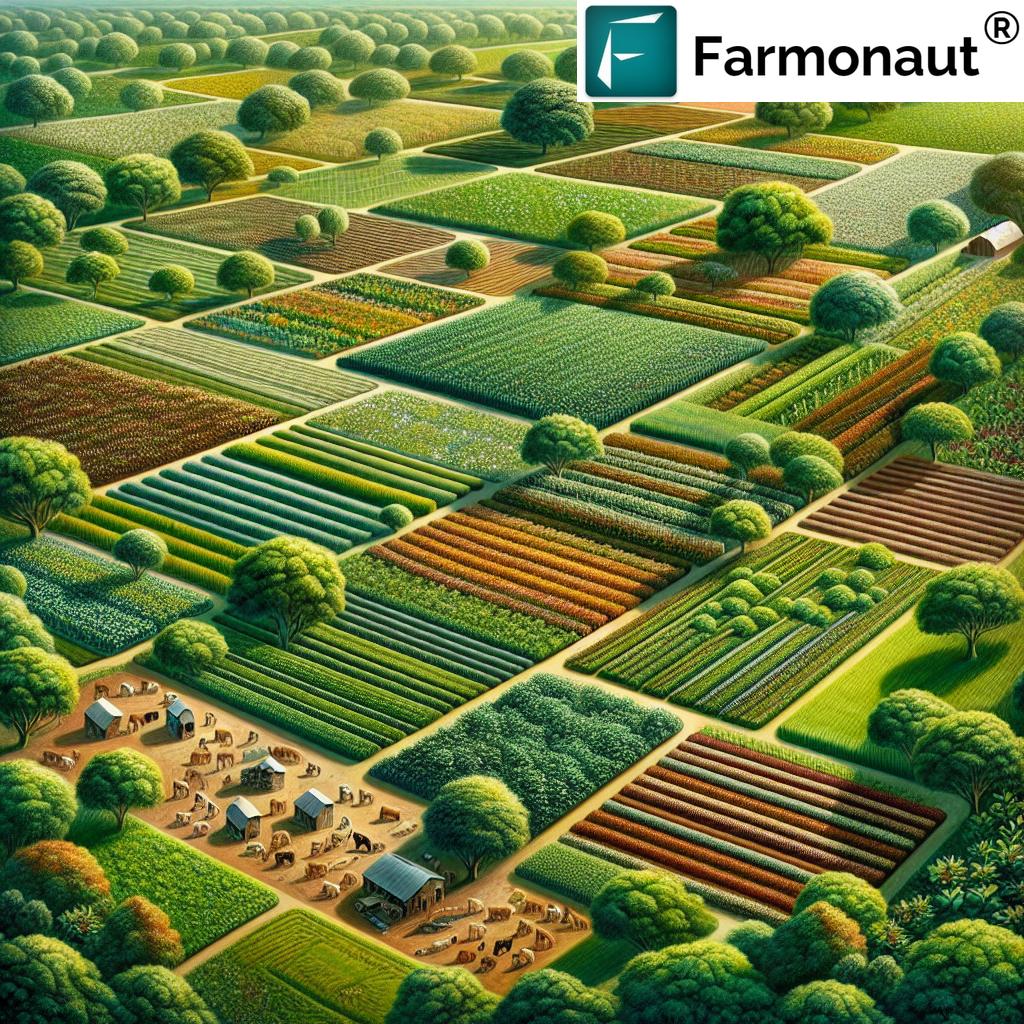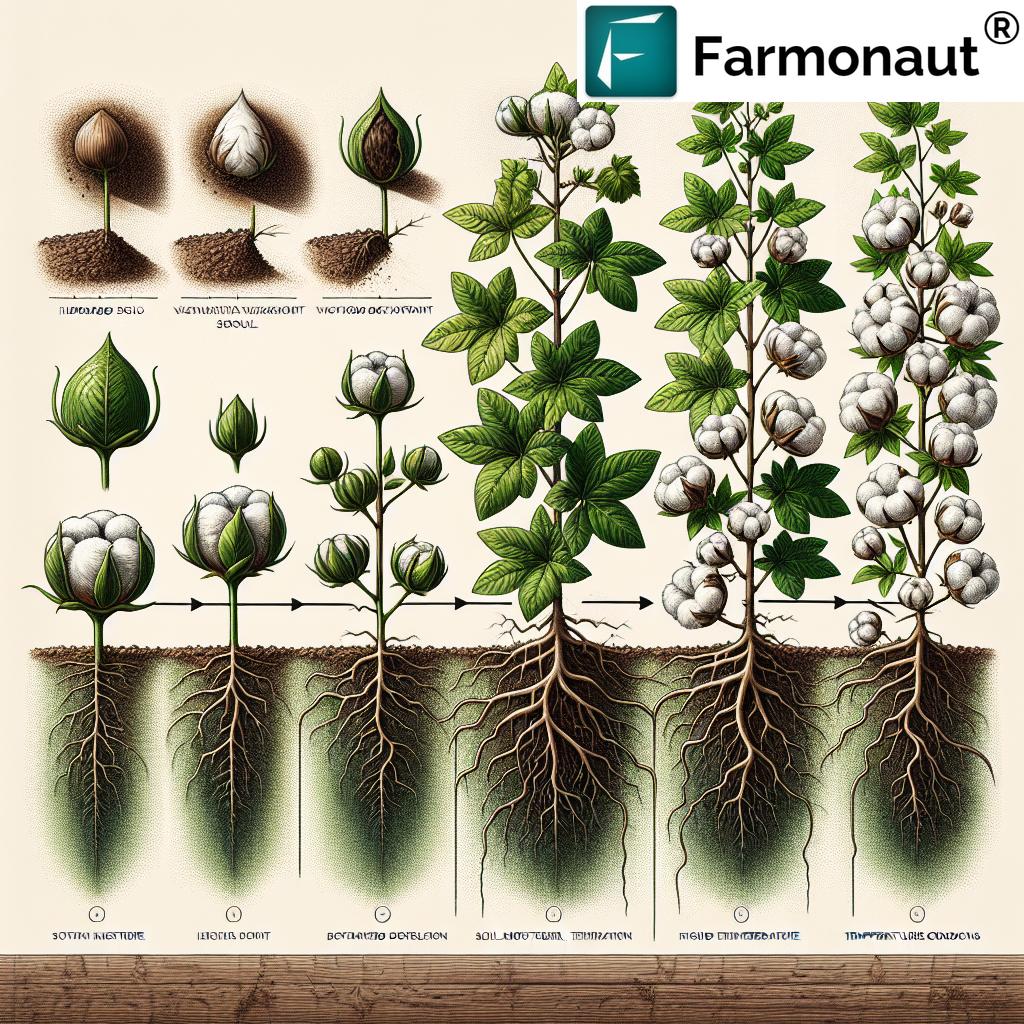Table of Contents
- Introduction: The Evolution and Future of Smart Indoor Farming Systems in 2025
- Fast Facts: 2025 Indoor Vertical Farming System Market
- Understanding Smart Indoor Farming Systems
- Technological Foundations: How IoT and AI Drive Smart Indoor Farming
- Comparative Trends Table: 2025 Smart Indoor Farming Technologies
- Advantages of Smart Indoor Farming Systems vs. Traditional Agriculture
- 2025 Market Trends & Growth Drivers: Indoor Vertical Farming System Market
- Farmonaut AI & Satellite Platforms: Satellite-Driven Data, Blockchain, Sustainability
- Challenges & The Path Forward: Ensuring Scalability and Sustainability
- Frequently Asked Questions (FAQ)
- Conclusion: Smart Indoor Farming System—2025 and Beyond
“Smart indoor farming systems are projected to fuel a 30% increase in global vertical farming market size by 2025.”
“By 2025, over 70% of new indoor farms will adopt technology-integrated systems to optimize crop yields.”
Smart Indoor Farming System: 2025 Market Trends
In a world grappling with increasing population pressures, limited arable land, and the intensifying impacts of climate change, traditional agriculture faces unprecedented challenges. The need for a more resilient, scalable, and sustainable approach to food production has never been more pressing.
This is the context in which smart indoor farming systems, and particularly indoor vertical farming system market, have emerged as transformative solutions. By 2025, these indoor farming systems have evolved into highly sophisticated, technology-driven networks, redefining the future of agriculture through enhanced productivity, efficiency, and environmental sustainability.
In this comprehensive guide, we explore the key market trends shaping smart indoor farming system adoption in 2025. We examine how IoT, advanced sensor networks, AI, robotics, automation platforms, and innovative vertical farming systems are not only boosting food productivity but also actively contributing to sustainability and climate resilience.
Whether you’re a grower, entrepreneur, policymaker, researcher, or agri-tech enthusiast, this in-depth article will equip you with everything you need to know about the evolution, advantages, market dynamics, and future outlook of smart indoor farming systems.
Fast Facts: 2025 Indoor Vertical Farming System Market
- The indoor vertical farming system market is projected to exceed $12.5 billion globally in 2025.
- Top regions driving growth: North America, Europe, and Asia-Pacific urban hubs.
- Hydroponics and aeroponics account for more than 65% of new system adoptions in 2025.
- Energy-efficient LED lighting and IoT smart farming system automation are now standard, enabling year-round crop cycles in over 50% of major cities.
Understanding Smart Indoor Farming Systems
Smart indoor farming systems mark a revolutionary leap beyond traditional agriculture. These systems utilize controlled environments, enabled by advanced technologies such as the Internet of Things (IoT), artificial intelligence (AI), robotics, and sensor networks.
- IoT smart farming system: Networks of sensors continuously monitor variables like temperature, humidity, light spectrum, CO2 levels, and soil/nutrient content.
- AI-driven control: Data is processed using machine learning models and AI algorithms, which optimize crop cycles, resource allocation, and operational precision.
- Vertical farming: Crops are stacked vertically—maximizing production per square meter within urban or space-limited environments.
Unlike conventional agriculture that depends heavily on seasonal weather and large expanses of arable land, smart indoor farming systems create highly controlled, customizable environments that enable year-round production—even in regions facing resource scarcity, soil degradation, or climate uncertainty.
Technological Foundations: How IoT and AI Drive the Smart Indoor Farming System
The backbone of every smart indoor farming system in 2025 is a seamless integration of connected technologies:
- IoT Sensors: Sensors collect vast amounts of data within the farm environment—from light and temperature to humidity, CO2, and nutrient levels. This data is crucial for real-time monitoring and precisely adjusting conditions.
- AI Algorithms: Artificial intelligence is used to analyze the sensor data and predict patterns—such as crop growth cycles, pest outbreaks, or resource deficiencies. This intelligence allows for automation platforms to intervene and optimize environmental variables.
- Robotics: Automated machines are responsible for sowing, monitoring, harvesting, and even pollination. Labor costs and operational errors are reduced, while yield and consistency are enhanced.
- Cloud-Based Control Platforms: Farms are accessible remotely via secure, cloud platforms—enabling both large agribusinesses and urban farmers to scale their operations efficiently.
These technological foundations redefine food production, making indoor farming systems both scalable and accessible. The 2025 evolution includes further integration with renewable energy solutions, advanced LED lighting, and next-gen AI—driving new heights in efficiency and sustainability.
Comparative Trends Table: 2025 Smart Indoor Farming Technologies
| Technology | Estimated Market Size (2025) | Projected Annual Growth Rate (%) | Productivity Improvement (%) | Sustainability Impact | Adoption Rate (Est%) |
|---|---|---|---|---|---|
| Smart IoT Sensors | $2.9B | 26% | +40% | High | 85% |
| LED Lighting Systems | $1.8B | 22% | +35% | High | 75% |
| Automated Climate Control | $1.2B | 29% | +30% | High | 70% |
| Hydroponic Setups | $3.1B | 20% | +28% | Medium | 63% |
| Vertical Farming Racks | $3.5B | 27% | +50% | High | 90% |
The table above highlights key technologies empowering the smart indoor farming system market in 2025, from IoT-enabled sensor networks to vertical farming racks. These innovations deliver improved productivity, efficiency, and sustainability within modern agricultural operations.
Advantages of Smart Indoor Farming Systems Over Traditional Agriculture
Critical Advantages
- Water Efficiency: Indoor farming systems use up to 90% less water than field agriculture, thanks to closed-loop hydroponic and aeroponic systems.
- No Need for Pesticides/Herbicides: The controlled indoor environments significantly reduce disease and pest risk, eliminating most chemical applications.
- Year-Round, Reliable Production: Indoor farming is decoupled from seasonal and weather constraints, ensuring consistent food supply even amid climate change.
- Space Maximization via Vertical Farming: Vertical farming enables crops to be stacked vertically, maximizing usable growth space—critical in urban settings where land is limited.
- Urban Localization: Placing indoor farms closer to population centers reduces transportation emissions, lowers food miles, and ensures freshness.
- Scalability & Resource Optimization: IoT platforms automate the monitoring and management of nutrient and water supplies, greatly enhancing resource efficiency.
More Advantages:
- Mitigation of Soil Degradation: Because most smart indoor farming systems use soilless methods (hydroponics, aeroponics), they overcome soil degradation and salinity issues faced by traditional agriculture.
- Rapid Innovations in Lighting Technology: Adoption of energy-efficient LED lighting optimizes photosynthesis across various crops and reduces power consumption, driving both productivity and sustainability.
- Data-Driven Decision-Making: Integrated sensor networks and AI-driven data analytics allow for rapid responses to any environmental or crop anomalies.
2025 Market Trends & Growth Drivers: Indoor Vertical Farming System Market
What’s Driving the Growth of the Smart Indoor Farming System Market?
- Rising Urbanization: The trend toward urbanization means more consumers living in cities with limited space. Indoor vertical farming maximizes urban real estate for food production.
- Increasing Demand for Organic and Local Produce: Conscious consumers are demanding pesticide-free, sustainably grown, and traceable foods found in indoor smart farm outputs. Blockchain-enabled traceability systems further enhance transparency and safety.
- Sustainability Regulations & Climate Pressures: Governments and cities worldwide are prioritizing resilient and sustainable agriculture to reduce the environmental impact.
- Advancements in Lighting and Automation: LED lighting systems, AI, and automation platforms continue to become both more affordable and sophisticated—making smart indoor farming systems economically viable.
- Supply Chain Resilience: The lessons of recent years have exposed the vulnerability of global food chains. Indoor farming systems enable local production and shorter supply lines.
- Corporate and Institutional Investment: The indoor vertical farming system market is now a key space for investment by tech companies, food retailers, and even real estate developers in 2025.
Use Case Spotlight: Enabling Agricultural Lending & Insurance
New applications, such as satellite-supported crop loan & insurance verification, are helping both farmers and financial institutions reduce fraud, increase access to lending, and improve risk assessment by using real-time remote monitoring of smart indoor farm environments.
Farmonaut AI & Satellite Platforms: Satellite-Driven Data, Blockchain, Sustainability
At Farmonaut, we believe that real-time, data-driven insights are the future of sustainable agriculture and smart indoor farming systems. Our integrated platform brings together multispectral satellite imagery, AI analytics, blockchain traceability, and resource management to optimize both indoor and outdoor food production.
- Satellite-Based Monitoring: Satellite observations provide high-resolution, real-time analysis of crop health, soil conditions, and environmental impacts. This is invaluable for both traditional agriculture and modern indoor farms trying to maximize efficiency and yields.
-
Jeevn AI Advisory: JEEVN AI analyzes live satellite and farm data for custom crop recommendations, weather forecasting, and risk detection.

- Blockchain Traceability: By leveraging blockchain-based traceability platforms, food can be tracked from seed to shelf—ensuring safety, transparency, and consumer trust—factors that are increasingly essential in the 2025 food market.
-
Environmental Impact Tracking: Farmonaut’s carbon footprinting tools help measure and reduce resource consumption, water use, energy, and emissions, encouraging the adoption of sustainable best practices within the indoor vertical farming system market.
Explore more about our carbon impact monitoring here. - Fleet & Resource Management: Indoor farm operators can use satellite-driven fleet management tools to optimize logistics, reduce costs, and improve sustainability across their operations.
- Large-Scale Farm Management Platforms: For commercial, multi-unit, or corporate producers in the vertical farming system market, our farm admin app enables real-time oversight, scalability, and analytics across multiple locations.
Our suite of smart farming APIs empowers developers and businesses to integrate scalable, satellite-driven insights directly into their indoor farming systems.
Explore Farmonaut API or see our API Developer Docs for full integration options.
Challenges & The Path Forward: Ensuring Scalability and Sustainability in Indoor Farming Systems
Ongoing Challenges in 2025
- High Initial Investment: Indoor farming systems involve higher starter costs for infrastructure, automation, and technology adoption compared to traditional agriculture.
- Energy Consumption: LED lighting, environmental control systems, and automation require significant energy resources. Reducing operational energy costs remains a focus, especially for large-scale indoor farms.
- Technical Expertise: Running advanced IoT and AI-enabled smart farming systems demands new skills, potentially limiting adoption in regions lacking such expertise.
- Space & Real Estate Constraints: In highly urbanized settings, access to appropriate vertical space is not always straightforward.
Solutions & Innovations Making the Future Brighter
- Integration with Renewable Energy: Next-gen vertical farming operations increasingly tap solar, wind, and battery storage solutions to reduce grid reliance and long-term costs.
- Energy-Efficient Hardware: 2025 sees rapid development in LED lighting, precision HVAC controls, and insulated grow rooms—each optimized for reduced operation costs within smart indoor farming systems.
- User-Friendly Platforms: The trend toward intuitive, integrated software allows for easier training, more accessible monitoring, and broader scalability.
- Government Support & Research: Many cities and nations offer incentives, R&D grants, or technical support for indoor vertical farming system market adoption.
- Data-Driven Best Practices: Satellite and AI-powered monitoring (like that provided by platforms such as Farmonaut) help identify issues before they become costly—leading to better planning and optimized resource management.
As AI, IoT, robotics, and sustainable technologies mature, many of these barriers are expected to diminish—accelerating global adoption and making indoor farming systems an integral part of our food future.
Frequently Asked Questions (FAQ) on Smart Indoor Farming Systems (2025)
What defines a smart indoor farming system?
A smart indoor farming system is an agriculture solution that employs IoT sensors, AI, advanced automation, and controlled environment techniques to optimize crop production within urban or limited-footprint spaces. These systems monitor and automatically manage light, temperature, humidity, CO2, nutrients, and more.
How does a smart indoor farming system differ from traditional farming?
Unlike traditional farming, smart indoor systems create precise, controlled environments using sensor data and AI algorithms to adjust variables in real-time. They use less water, no pesticides, maximize space with vertical stacking, and facilitate year-round production regardless of climate or season.
What is the role of IoT in indoor farming systems in 2025?
The IoT smart farming system market in 2025 involves the deployment of sensors that continuously collect environmental and crop data, enabling automated, remote control, predictive analytics, and detailed resource management.
What are some examples of indoor vertical farming system technologies?
Examples include automated LED lighting grids, hydroponic and aeroponic nutrient delivery systems, vertical rack assemblies, robotic harvesters, and AI-powered climate control platforms—all enabling precise and scalable agricultural production in indoor environments.
Is indoor farming sustainable?
Yes. Indoor farming systems significantly reduce water usage, eliminate most chemical pesticides, lower transportation emissions, and can integrate with renewable energy. These factors make them among the most sustainable forms of food production in 2025.
How can satellite and AI technology improve indoor vertical farming systems?
Platforms like Farmonaut can provide high-resolution monitoring, AI-driven crop advisories, and climate impact tracking. These insights optimize productivity, identify issues early, and support decision-making—making indoor farms more efficient, sustainable, and economically resilient.
How do consumers benefit from the adoption of smart indoor farming systems?
Consumers enjoy fresher, pesticide-free, traceable food with a reduced carbon footprint. Urban indoor farming also supports food security by bringing food production closer to city populations.
What should businesses look for in smart indoor farming system platforms?
Businesses should prioritize systems that offer integrated IoT monitoring, data analytics, automation, blockchain traceability, and scalability. Consider accessibility (via apps and APIs), affordability, and support for real-time resource and environmental tracking.
Conclusion: Smart Indoor Farming System—2025 and Beyond
The landscape of agriculture in 2025 is fundamentally shifting. Smart indoor farming systems now epitomize the next era of technology-driven, sustainable food production. With IoT, AI, robotics, renewable energy, and advanced sensor networks converging, these indoor vertical farming systems are making it possible to grow healthy food in limited spaces, amidst urban density, and under challenging environmental conditions.
The indoor vertical farming system market is experiencing unprecedented growth, empowering local food systems, reducing resource consumption, and ensuring climate resilience. For governments, businesses, and consumers alike, the advantages of smart indoor farming systems are undeniable: from improved sustainability and traceability to reduced operational costs and dependable year-round yields.
At Farmonaut, we are committed to democratizing access to advanced satellite, AI, and monitoring solutions for indoor and outdoor farms worldwide. Our platform’s API and app ecosystem help ensure real-time data visibility, sustainability, and actionable insights, supporting you in building a future-proof, resilient, and prosperous food system.
Ready to explore smart indoor farming technology? Access Farmonaut’s solutions on web, Android, or iOS today!
Discover the possibilities. Optimize your crop cycles. Join the smart indoor farming system revolution in 2025 and beyond.








